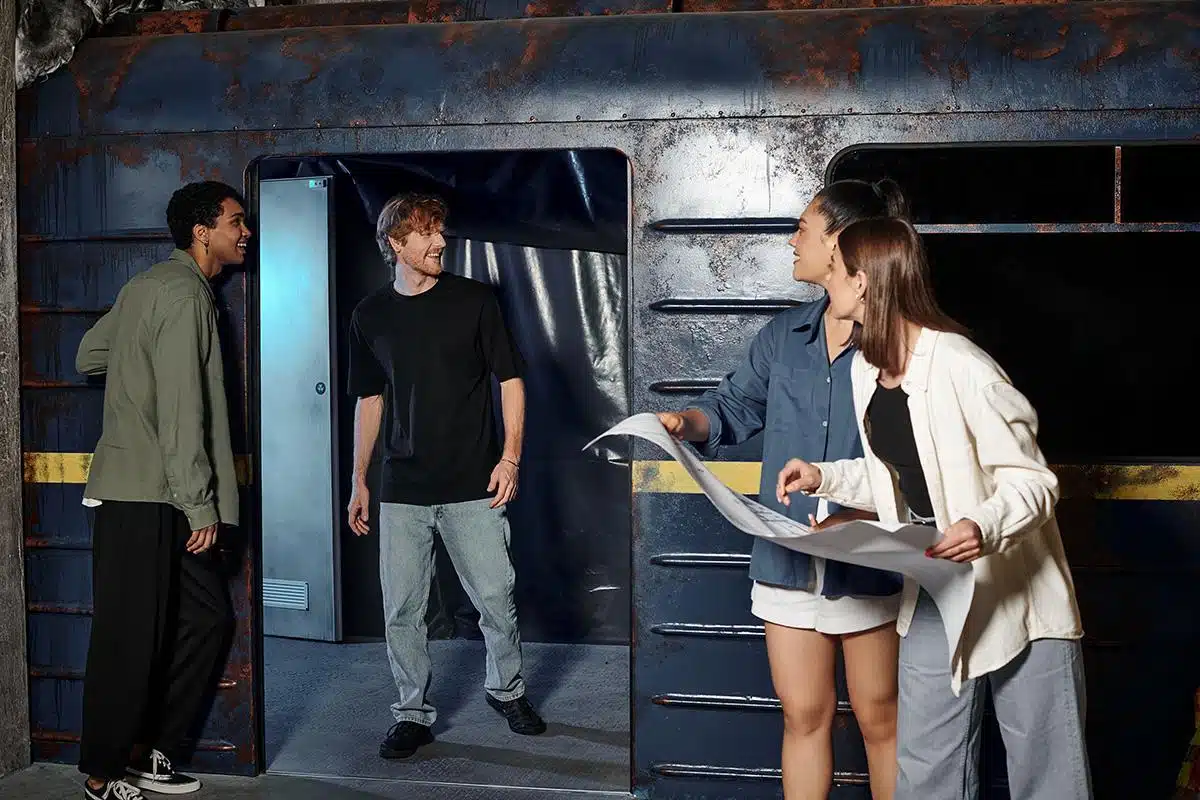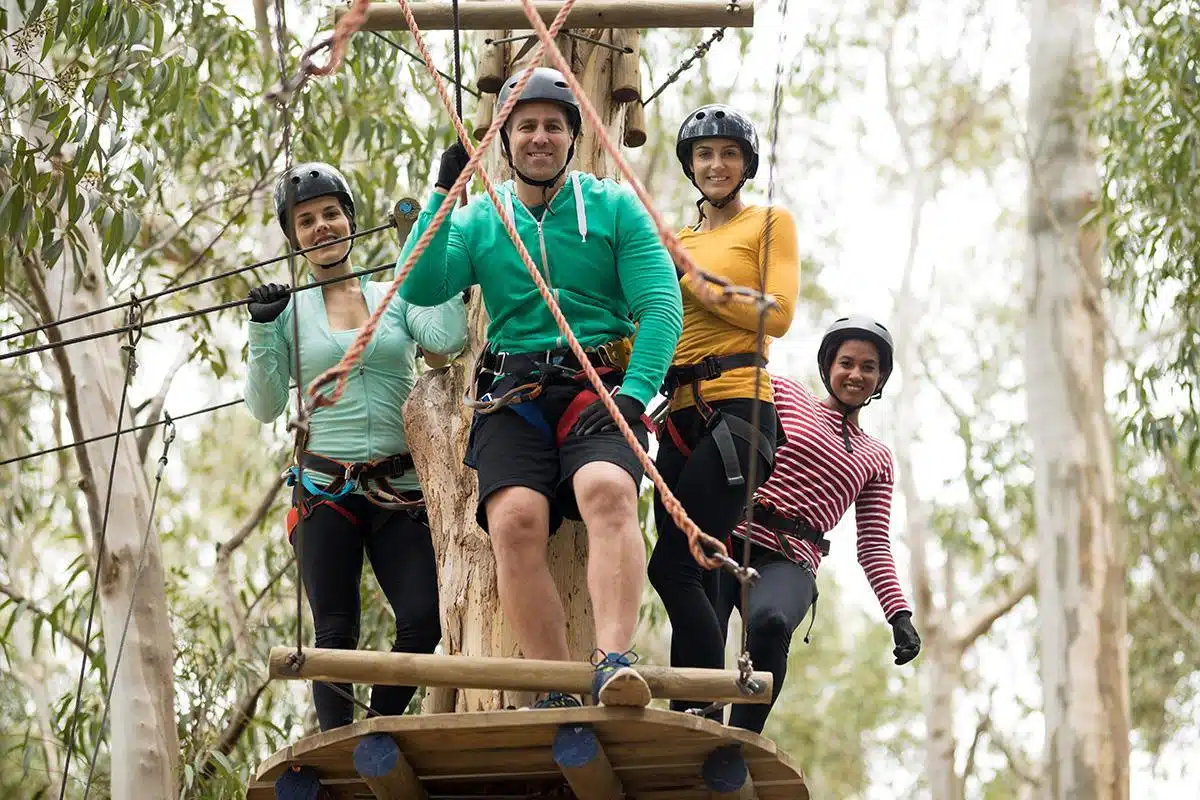- Introduction
- Types of Innovative Team-Building Activities
- Tailoring Activities to Your Team
- Benefits of Innovative Team-Building Activities
- Tips for Successful Implementation
- Conclusion
- Resources and Further Reading
- FAQs
- What are the most popular team-building activities for corporate events?
- How do I choose the right team-building activity for my team?
- Can team-building activities be tailored to specific corporate goals?
- What if some team members are not enthusiastic about participating?
- How can I ensure the safety of all participants during physical activities?
- What if the team-building activity does not achieve the desired outcomes?
Introduction
Team-building activities foster a collaborative, motivated, and efficient work environment. In the corporate world, high-end events often incorporate innovative team-building exercises to enhance the skills and cohesion of their teams. This guide will explore various team-building activities categorized into garden, classic, and modern styles, tailored for luxury and high-end corporate events. Whether your team enjoys the great outdoors, prefers indoor activities, or thrives on technology, there is something here for everyone.
Importance of Team-Building in Corporate Events
Team-building activities are more than just a fun break from the daily grind. They play a vital role in enhancing communication, boosting morale, and fostering a sense of unity among employees. In high-end corporate settings, these activities can also reflect the company’s commitment to employee well-being and professional development. Companies can create a more engaged and productive workforce by investing in team-building.
Objectives of Innovative Team-Building Activities
The primary objectives of team-building activities are to improve interpersonal relationships, encourage teamwork, and develop problem-solving skills. For high-end corporate events, the focus is often on innovation and luxury, ensuring that the activities meet these objectives and provide a memorable and enjoyable experience. Innovative team-building activities aim to:
- Enhance communication and collaboration.
- Foster creativity and out-of-the-box thinking.
- Strengthen leadership and decision-making skills.
- Boost team morale and motivation.
- Align team efforts with corporate goals and values.
Types of Innovative Team-Building Activities
Outdoor Activities
Adventure Challenges
Adventure challenges are perfect for teams that thrive on excitement and physical activity. These activities can range from obstacle courses to high ropes courses, offering a mix of physical and mental challenges. Adventure challenges promote teamwork, trust, and resilience among team members.
Example: High-end adventure parks with customized corporate packages, including zip-lining, rock climbing, and survival skills workshops.
Scavenger Hunts
Scavenger hunts are a classic team-building activity that can be tailored to fit any corporate event theme. Teams are given a list of items or clues to find within a set timeframe. This activity encourages problem-solving, strategic thinking, and collaboration.
Example: Luxury city scavenger hunts, where teams explore historical landmarks, upscale neighborhoods, and exclusive venues to find clues.
Sporting Events
Sporting events provide a competitive yet fun environment for team-building. From traditional sports like soccer and basketball to unique activities like yacht racing or polo, sporting events can be customized to suit the team’s interests and abilities.
Example: Organizing a corporate golf tournament at a prestigious country club or a sailing regatta in a picturesque coastal location.
Indoor Activities

Escape Rooms
Escape rooms are immersive, puzzle-based experiences where teams must work together to solve clues and escape within a set timeframe. These activities are excellent for enhancing problem-solving skills, communication, and teamwork.
Example: High-end escape rooms with sophisticated themes and custom-designed puzzles reflecting the company’s industry or values.
Cooking Competitions
Cooking competitions are a fun and interactive way to build teamwork and creativity. Teams compete to create the best dish, often judged by professional chefs. This activity encourages collaboration, time management, and innovation.
Example: Hosting a cooking competition at a luxury culinary school or hiring a celebrity chef to mentor the teams.
Creative Workshops
Creative workshops allow team members to express their creativity and learn new skills. These can include activities like painting, sculpting, or even mixology classes. Creative workshops foster a relaxed and open environment where ideas can flow freely.
Example: A high-end art studio workshop where teams create their masterpieces under the guidance of renowned artists.
Technology-Based Activities
Virtual Reality Experiences
Virtual reality (VR) experiences offer a cutting-edge approach to team-building. Teams can embark on virtual adventures, complete challenges, or engage in collaborative problem-solving in immersive digital environments. VR activities are ideal for tech-savvy teams and can be customized to reflect corporate themes and goals.
Example: A VR escape room or virtual treasure hunt explicitly designed for corporate teams.
Online Gaming Tournaments
Online gaming tournaments bring a competitive edge to team-building. Teams can compete in popular games that require strategy, coordination, and teamwork. These tournaments can be hosted virtually, making them accessible for remote teams.
Example: Organizing a corporate e-sports tournament featuring games like League of Legends or Fortnite, with professional commentators and prize incentives.
Interactive Simulations
Interactive simulations offer a realistic and engaging way to build skills and test decision-making abilities. These simulations can be tailored to replicate real-world business scenarios, providing valuable insights and learning opportunities for team members.
Example: A business strategy simulation where teams must navigate market challenges, make strategic decisions, and compete against each other in a simulated corporate environment.
Tailoring Activities to Your Team
Assessing Team Dynamics
Understanding your team’s dynamics is crucial for selecting the most effective team-building activities. Assess the team’s personality types, communication styles, and existing relationships. Are there natural leaders or more reserved individuals? Is the team diverse in terms of age, background, and skills? Understanding these dynamics will help you choose activities that cater to everyone’s strengths and foster a more inclusive environment.
Considering Physical Abilities
When planning team-building activities, it’s essential to consider the physical abilities of all team members. Ensure that activities are accessible to everyone and provide alternatives for those with physical limitations. For instance, if you’re planning an adventure challenge, ensure that less physically demanding tasks still require teamwork and problem-solving skills. Inclusivity is vital to making everyone feel valued and ensuring the event’s success.
Aligning with Corporate Goals
Aligning team-building activities with your corporate goals can enhance their impact. Consider what you want to achieve with the event. Is the goal to improve communication, foster innovation, or boost morale? Choose activities that reflect and support these objectives. For example, if innovation is a crucial goal, opt for activities encouraging creative thinking and problem-solving, such as escape rooms or workshops. You can ensure that the event contributes to your business objectives by aligning activities with corporate goals.
Benefits of Innovative Team-Building Activities
Enhanced Communication
Innovative team-building activities are designed to break down communication barriers. Whether through solving puzzles in an escape room or strategizing in a scavenger hunt, these activities require participants to communicate clearly and effectively. Improved communication can lead to better collaboration and a more cohesive team dynamic, which is essential for the success of any organization.
Improved Collaboration
Team-building activities promote collaboration by encouraging team members to work together towards a common goal. Individuals must rely on each other’s strengths and skills in activities like cooking competitions or sporting events. This experience can translate to a more collaborative work environment, where employees are more likely to support each other and work together efficiently.
Increased Morale and Motivation
Participating in fun and engaging activities can significantly boost team morale and motivation. Team-building events provide a break from the usual work routine, offering a refreshing and enjoyable experience. This can lead to increased job satisfaction and a more positive work environment. Employees who feel valued and appreciated are more likely to be motivated and productive.
Tips for Successful Implementation
Planning and Preparation
Defining Objectives
Before planning any team-building activity, clearly define your objectives. What do you hope to achieve? Are you aiming to improve team communication, foster innovation, or have fun? Defining your objectives will help guide the selection of activities and ensure that the event meets your goals.
Budgeting and Resources
Establishing a budget is crucial for planning a successful team-building event. Consider all potential costs, including venue rental, facilitators, materials, and additional expenses.
Allocate resources accordingly and explore options that fit your budget while providing a high-quality experience.
Execution and Facilitation
Engaging Professional Facilitators
Professional facilitators can significantly enhance the success of your team-building event. They bring expertise in managing group dynamics and can ensure that activities run smoothly and achieve the desired outcomes. Look for facilitators with experience in corporate events and a track record of successful engagements.
Tools and Equipment
Ensure you have all the necessary tools and equipment for your chosen activities. This might include technology for virtual reality experiences, materials for creative workshops, or sporting equipment for outdoor challenges. Preparing everything in advance will help the event run smoothly and prevent last-minute issues.
Follow-Up and Reflection
Gathering Feedback
After the event, feedback from participants will be gathered to understand what worked well and what could be improved. Use surveys or informal discussions to capture insights and suggestions. This feedback will be valuable for planning future events and ensuring continuous improvement.
Measuring Impact
Measure the impact of your team-building activities on your corporate goals. This can be done through follow-up surveys, performance metrics, or observing team dynamics and communication changes. Assessing the impact will help you determine the effectiveness of the activities and guide future planning efforts.
By following these tips and tailoring activities to your team’s specific needs, you can ensure that your innovative team-building events effectively achieve your corporate objectives.
Conclusion
Recap of Key Points
Innovative team-building activities enhance communication, collaboration, and morale within corporate teams. You can create practical and inclusive events by assessing team dynamics, considering physical abilities, and aligning activities with corporate goals. These outdoor, indoor, or technology-based activities offer unique opportunities for team members to connect, engage, and grow together. Planning and preparation, engaging professional facilitators, and gathering feedback ensure these activities’ success and alignment with corporate objectives.
Encouragement for Future Initiatives
Investing in innovative team-building activities demonstrates a commitment to your team’s well-being and professional development. As you plan future events, explore new and creative ways to engage your team. Embrace the opportunity to create memorable experiences that not only strengthen team bonds but also contribute to your organization’s overall success and culture.
Resources and Further Reading
Books and Articles
- “The Five Dysfunctions of a Team” by Patrick Lencioni – This book provides insights into typical team dynamics issues. It offers practical solutions for building a cohesive team.
- “Team Building: Proven Strategies for Improving Team Performance” by William G. Dyer – A comprehensive guide on various team-building strategies and their applications in corporate settings.
- “Creativity, Inc.” by Ed Catmull – This book explores how to foster creativity and innovation within teams, drawing on experiences from Pixar Animation Studios.
Online Platforms
- Teambonding.com – A resource for finding a wide range of team-building activities and ideas.
- Mindtools.com – Offers articles and tools for improving team dynamics and leadership skills.
- HRDQ.com – Provides training resources and team-building activities designed for corporate environments.
Professional Services
- Curated Events – Specializes in planning high-end corporate events with tailored team-building activities. Their locations in Charleston, Charlotte, Chesapeake, DC, Nashville, and Raleigh offer unique event experiences.
- TeamBonding – Offers professionally facilitated team-building events and activities across various themes and objectives.
- Outback Team Building & Training – Provides customized team-building solutions and professional facilitation services.
FAQs
What are the most popular team-building activities for corporate events?
Popular activities include escape rooms, scavenger hunts, cooking competitions, adventure challenges, and virtual reality experiences. These activities are favored for fostering teamwork, communication, and creativity.
How do I choose the right team-building activity for my team?
Assess your team’s dynamics, consider their physical abilities, and align the activity with your corporate goals. Additionally, gather input from team members to ensure the activity is engaging and enjoyable for everyone.
Can team-building activities be tailored to specific corporate goals?
Yes, team-building activities can be customized to align with specific corporate goals, such as improving communication, fostering innovation, or boosting morale. Professional facilitators can help design activities that meet your objectives.
What if some team members are not enthusiastic about participating?
Encourage participation by explaining the activity’s benefits and how it aligns with team and corporate goals. Choose activities that cater to various interests and abilities to ensure inclusivity.
How can I ensure the safety of all participants during physical activities?
Conduct a thorough risk assessment, provide appropriate safety equipment, and engage professional facilitators to oversee activities. Ensure that all participants know safety protocols and that any physical limitations are considered.
What if the team-building activity does not achieve the desired outcomes?
Gather feedback from participants to understand what went wrong and identify areas for improvement. Use this feedback to adjust future activities and better align them with your objectives. Measuring impact and being open to iterative enhancements will enhance the effectiveness of future events.


